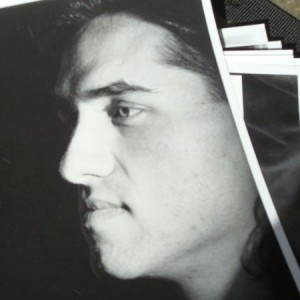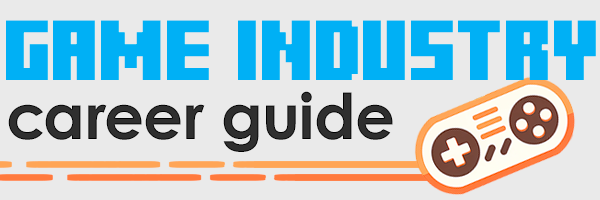How to Become a Video Game Character Modeler

Darran Hurlbut has been making art for as long as he can remember – but his first job as a Video Game Artist was purely accidental.
That was in 1995, and he’s never looked back. His decades-long career in games has included many roles including Concept Artist, Environment Artist, and Character Modeler. We’re speaking with him today about his primary job as a Video Game Character Modeler – how he got the job, what it takes to succeed, and how you could start your own career as a character modeler in video games.
What do you do each day as a Character Modeler?
I get to make art, mixing my artistic skills and knowledge with complicated software that is sometimes fun and often challenging to use. I also get to work with a team of artists who for the most part love what they do.
How did you get started in video game art?
I applied to an ad in a weekly paper, not even knowing it was for a video game studio. I got a call back six months later. They hired me solely because of my traditional art work and then I learned to use the 3d and 2d software at the company. [laughs] I got lucky as far as I was concerned, it was awesome and fun.
From there, I did environments and characters both. But because of my background with figure studies and drawing, I was a strong enough character artist and they eventually asked me to take on that task exclusively.
What’s your favorite part of the job?
I’ve been doing games for a while now. Things that stand out when I look back are how much I have grown and improved, and the friends I’ve made along the way.
As I grew as a game artist, I would find myself wanting to take on tasks above and beyond what was asked for. So I’d push myself and experiment with new-found skills and knowledge, and take on more complicated challenges. Those efforts always payed off in one way or another. When I look back, those moments have become my favorite career moments.
What’s your least favorite part?
My least favorite moments… Well, not all projects work out. It’s always sad when, what initially started as a inspiring idea for a game, turns into something that doesn’t appeal to enough people to sustain the studio. It’s a tough business at times.
What part of your job might people find surprising?
Time. It takes time. Game development is no simple thing, and since it continues to grow, it continues to change, but every little detail takes time.
There’s always new software that improves the amount of work you can do in a certain amount of time, but it always just makes more possibilities available, which then becomes more fuel for the ambitious. Which is great actually, because there is more and more incredible work being done, but it all takes time: learning the software, developing your process, and on top of that keeping up your traditional art skills. You have to love the work to give it that much of your time.
What skills and talents does it take to succeed as a Video Game Character Modeler?
Talents… Hmmm, with team projects it takes all sorts of talents. The talents that are important to you will become the talents that will become important to a project. If you just sculpt heads and you’re really good at it, that has value. If you’re great at painting then there’s value there. For an artist, having technical knowledge can even be helpful, as there are jobs available as a technical artist.
On a very basic level for a Character Artist? Knowing anatomy, clothing design, and aspects of fantasy art character design will all become things that influence your portfolio and add to your appeal when you’re being considered for a position at a game studio.
What advice would you give to somebody considering a career in Character Modeling?
Inspiration. Be inspired, believe in yourself. There’s a lot to learn to impress yourself, and even more to impress others.
Allow yourself time to learn and always find something useful in all the failures. There are things which just take time, drawing daily, doing hundreds of quick painting studies. I spent every morning for 5 years straight just drawing figures out of my head to warm up, or muscle group studies, hand or face studies. And I watched my skill grow. Slowly and painfully, but they grew.
Learn to find value in all the advice or criticism you get, good or bad. All expression is honest, thought it might be painful to hear.
Allow yourself to be successful even though you don’t know everything about what you’re doing.
I wish I’d known all of those things when I was in school, but also just spending more time learning and practicing art fundamentals. It builds a strong foundation for artistic skill. Thinking that you’re either born with it or you’re not, is probably the worst thing you can believe. Being consistent with your practice and observing your growth over time can be a really good measure of what it takes to grow.
Allow yourself to be successful even though you don’t know everything about what you’re doing.
Be honest with artistic preference or inclinations, and use them to your advantage. If for some reason you only like drawing heads, then draw lots and lots of heads. If you only like making copies of other people’s art, then do that. Trust your inclinations, follow your inspirations, and develop a practice routine – you’ll naturally challenge that routine, and yourself, and have fun doing it.
What would you recommend for education to become a Video Game Character Modeler?
When I decided to become an artist I went to art school. I couldn’t afford CalArts, or Art Center, so I wound up going to my local city college, and got my start there.
Nowadays there are so many more options. There are special schools just for games. There are professional game artists who have formed their own schools, and there’s a ton of information online – videos, websites, tons of videos you can buy directly from artists.
You’re only limited when you don’t ask to learn.
With being a character artist you have to specialize, know a production pipeline, 3dsmax, Maya, Zbrush, Photoshop. PBR material editors, Substance Designer/Painter, Quixel NDO, physics-based clothing modeling programs like Marvelous Designer to name one. You can just start using the demos, or student versions of the software.
On top of school you can check out game studio’s conferences, where they demo their pipelines and talk about the “how” of their games. There’s so much out there! You’re only limited when you don’t ask to learn.
You can connect with Darran or check out his art at his online art portfolio. If you liked this interview, please share it with a friend.
Read my new book!
Making games for a living is an incredibly rewarding career, but it’s hard to break in unless you have insider knowledge. This book levels the playing field.


Hello, my name is Kelsey, im very young, but Intrested in this job! I love making character designs as it lets me use my creativity more, even with strict guild lines. Do you have any tips what I do to help move me toward this job? Thanks!
Hi Kelsey, you can learn these skills by going to art school, but also by taking online courses or even watching free videos online. For example if you go to YouTube.com and search for “character modeling” you’ll find dozens of videos. Have fun!